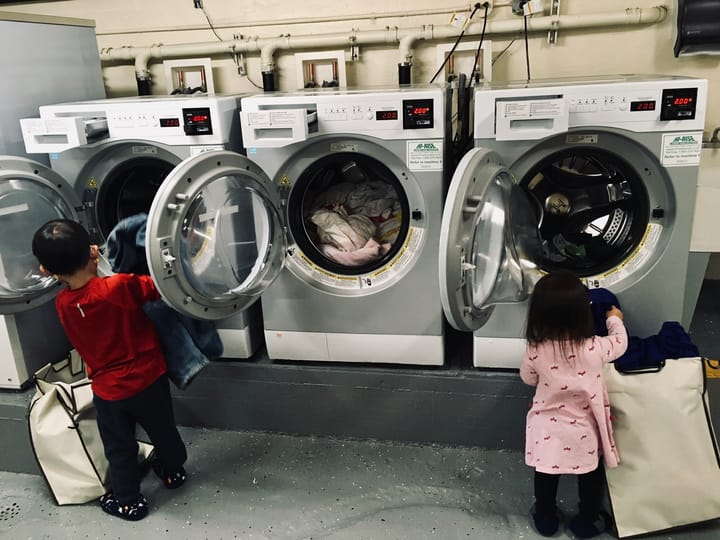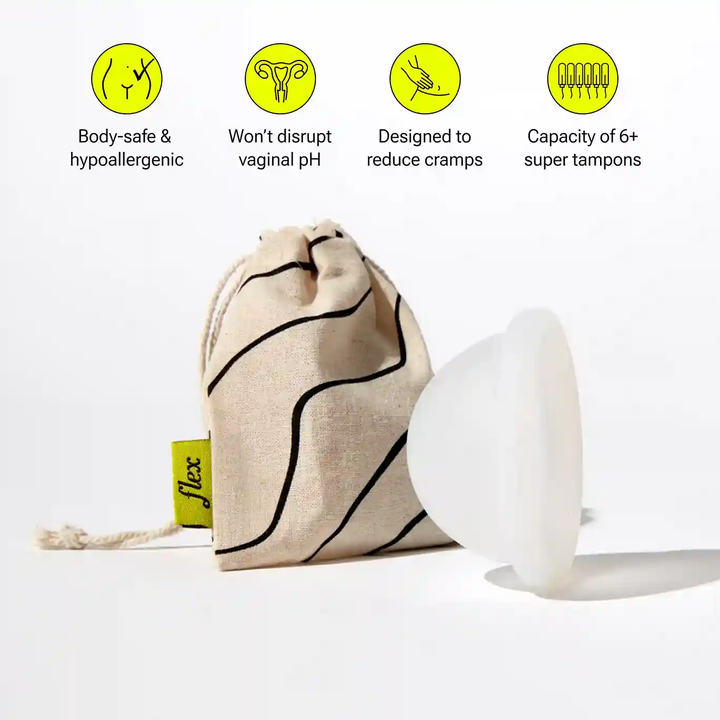Menstrual Cups: Comfort, Convenience, and Cost-Effective Alternative to Tampons and Pads
If you're tired of dealing with the discomfort, inconvenience, and high cost of traditional period products, it might be time to consider switching to a menstrual cup.

Alright, ladies, it's time to address the monthly party crasher we all know and dread - Aunt Flo. She's like that annoying relative who shows up unannounced and always brings a mess with her. And let's not forget the pain and misery she inflicts on us and those unfortunate enough to be around us. If you're in those early postpartum years, it's like you're reliving the elevator scene from The Shining in your nether regions. If you can relate to the feeling of bleeding out like you've been shot in the uterus once a month, know that you're not alone.
Now that I've cleared the room of any who are squeamish, let's talk about the holy grail of period products: the menstrual cup. Yes, you read that right. A cup. For your period. Because, tampons and pads just weren't cutting it.
What Makes Menstrual Cups Superior?
Comfort and convenience: Say goodbye to the risk of toxic shock syndrome (TSS) that comes with using tampons, and kick that uncomfortable feeling to the curb of having a giant, bulging pad stuffed in your underwear. Plus, you'll only need to empty it twice a day for a typical flow, so you can spend more time doing the things you love, and less time worrying about your period. Going for a swim? No problem. Running a marathon? You go, girl. Relaxing at an all day spa? Treat yo' self.
Saves Money: Did I mention it's also way cheaper than constantly buying tampons and pads? On average us women are spending anywhere from $100-$200 a year on tampons and pads. Most menstrual cups only cost between $25-$35 and with proper care can be reused for up to 10 YEARS. That's a teeny-tiny fraction of the cost of traditional period products.
Better for the Environment: Yes, you read that correctly - with a menstrual cup, you no longer have to toss out a tampon or pad after just one use. Instead, you can clean out your trusty cup and use it over and over again. Not only is this more cost-effective, but it's also a huge win for the environment. Think about it: your single silicone cup is replacing hundreds, if not thousands, of plastic products. By opting for reusability and durability, you're making a conscious choice to reduce your carbon footprint and give the environment a helping hand. And let's not forget the added bonus that silicone doesn't leak toxins or give off toxic gases when incinerated, so you can feel good about making the switch.
This article contains affiliate links to products I feel good about endorsing, meaning I may earn commission from qualifying purchases. Check disclaimers for more info.
Choosing the Right Cup
As someone who's been using menstrual cups since 2005, I can tell you firsthand that it's life-changing. Back in the day, the Diva Cup was pretty much the only option, and it lasted me over 10 years before I finally needed to size up after having kids. Since then, I briefly tried out the Lena Sensitive cup, but found it to be too flexible for me and prone to leaks. Now, I'm using BFree cups, which are the only physically anti-bacterial cups that don't require boiling to sanitize. You can even get these in a convenient 2-pack with one size up for heavy flow days. Trust me, once you've made the switch to a menstrual cup, you'll wonder how you ever got by without them.
Now, I won't lie to you, there is a bit of a learning curve when it comes to using a menstrual cup. Initially it might feel like trying to solve a Rubik's cube with your vagina. But once you get the hang of it, you'll feel like a period pro.
If you can feel it when you're wearing it, or it's leaking, it probably isn't the right cup for you. Don't settle, try a few different sizes or brands until you find the perfect fit. Put a Cup In It also has a great follow up quiz for troubleshooting menstrual cup leaks should you encounter them.
Common Concerns
"I'm nervous! What if I have leaks because I haven't mastered this yet?" If you're worried about the potential mess, you're definitely not alone. But don't worry, there are ways to make the transition easier. First, have a few pairs of period panties on hand. This is especially helpful if you're still dealing with postpartum gushers and often even standard tampons or pads don't cut it. The extra layer can provide some peace of mind and help you feel more confident as you get used to your new routine. Second, you can practice removing the cup when you shower. This way, any spills can be easily rinsed away without a trace.
"What if I don't have access to running water and my cup is overflowing??" You may occasionally need to empty your cup in a public restroom or somewhere without access to a private sink. But don't panic–all you need to do is wipe it out with toilet paper and you're good to go until you're back in the comfort of your own home again. But this is rare! Menstrual cups can hold 3 times as much fluid as a normal tampon. Thanks to the 10-12 hour capacity, I typically only have to empty once before bed and once in the morning.
"I've been using tampons and pads for years, change is scary!" Chances are, you have a friend or two in your life who has experience with menstrual cups and can offer some helpful tips and advice. Lean into your support group! But if you're the trailblazer in your group, you can always turn to online communities like the Put A Cup In It Facebook group for additional support and resources. With a little bit of support and determination, you'll be a menstrual cup pro in no time.
Dealing with periods can be a real pain. Whether it's the cramps, the mood swings, or the constant need to make sure you're not leaking, there's no denying that menstruation is no walk in the park. But the good news is that we're all in this together. Whether you prefer using menstrual cups, tampons, or pads, there's no right or wrong way to manage your period. At the end of the day, it's all about finding what works best for you and your body. Besides, once we've finally figured out how to deal with our periods, it's only a matter of time before perimenopause comes knocking. Welcome to your 40s, ladies!




Comments ()